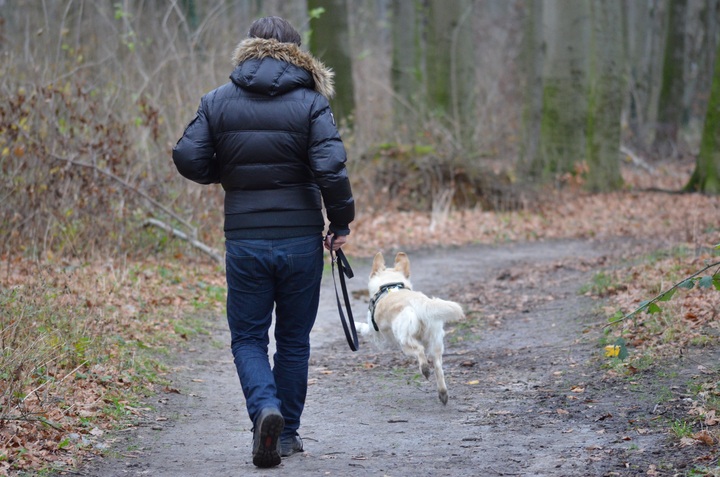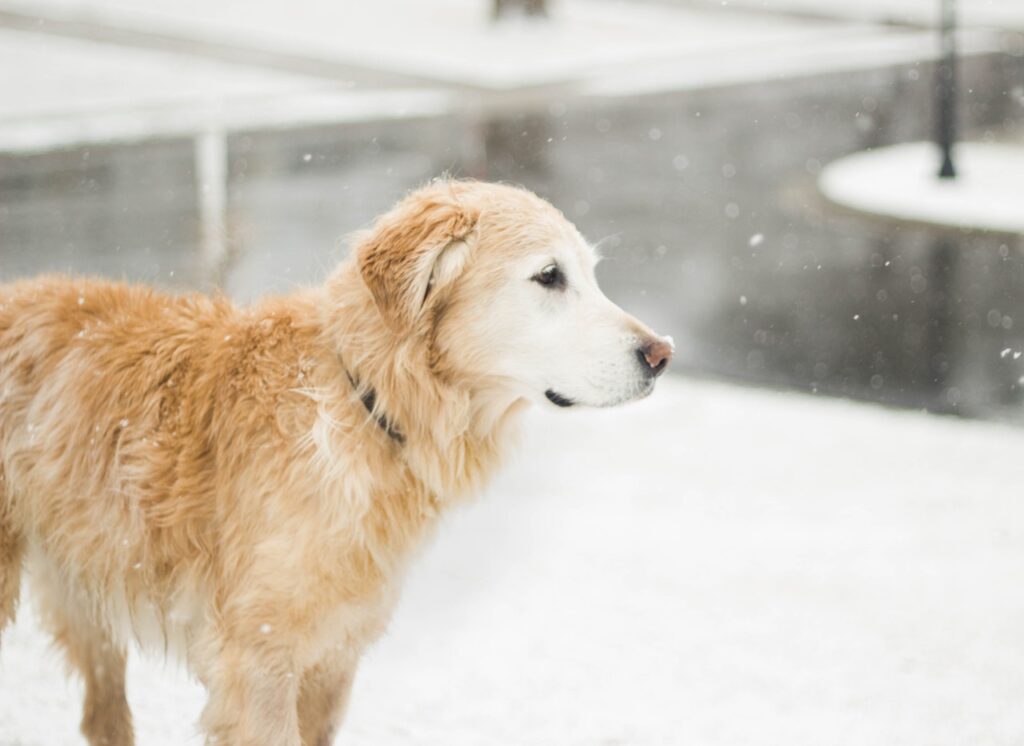How Cold Is Too Cold for a Labrador Retriever?
Do you want to know how cold a Labrador retriever can tolerate? As one of the most well-known dog breeds in the world, Labrador retrievers can survive in various climates. Concerns about how Labrador retrievers fare in the winter are common among pet owners. You’ve come to the correct site if you, too, want to know whether you should protect your Labrador retriever during the winter.
This post will examine how cold a Labrador Retriever can tolerate it. We will discuss what affects a dog’s tolerance to low temperatures, symptoms of discomfort or possible health hazards in subfreezing temps, and crucial precautions you can take to keep your Labrador warm and safe throughout the winter. You can make wise judgments and provide your pet with the finest care possible for its particular requirements if you know the appropriate temperature range.
History of Labrador Retrievers in Cold Weather
The Labrador Retriever is a breed renowned for thriving in cold temperatures. The Labrador Retriever was created in Newfoundland, Canada, and has a long history of adjusting to the region’s chilly temperature. Here is a short history of the breed and how it relates to cold climates:
Origins in Newfoundland
On Canada’s northeastern coast, Newfoundland province, the Labrador Retriever was created in the 18th century. Local hunters and fishermen mostly raised it to help them with their tasks.
Water Retrievers
Originally developed as water retrievers, Labradors were taught to help fishermen recover fish that had escaped from nets or lines. They could tolerate the icy waters of the North Atlantic because they were adept swimmers and possessed thick, water-resistant coats.
Cold Weather Adaptations
To survive in frigid climates, Labrador Retrievers evolved various morphological traits. They have a thick double coat comprising an outer, waterproof layer and a soft, insulating undercoat. This fur mix offers exceptional defense against cold and rainy weather.
Working Skills
Additionally, fishermen used Labradors as labor dogs to draw nets in, pull carts, & even carry cargo. They were ideally adapted for these jobs in inclement weather because of their robust body, webbed feet, and stamina.
Migration to England
The reason why are Labrador retrievers so popular in England started to rise in the early 19th century is when English sportsmen who were impressed by the canines’ extraordinary retrieving skills took some of the dogs back to England. As the breed’s popularity increased, the Labrador Retriever was finally recognized as a separate breed.
Modern Cold Weather Performance
Even now, Labradors still do well in cold weather. Their thick coats provide insulation and shield them from rain, wind, and cold. They are thus highly suited for outdoor athletic events, hunting, and search and rescue operations, even in severe winter climes.
The genetic composition of Labrador Retrievers is strongly influenced by their history and ability to thrive in cold climates. It’s crucial to remember that even if they are evolved to cold climes, they are still susceptible to severe weather. The well-being of these canines in frigid areas depends on proper care, which includes providing warmth and shelter and preventing exposure to severe cold.
What Is The Typical Labrador Retriever’s Tolerance To Temperature?
Labs are known to endure warm and cold conditions, so the typical Labrador Retriever has superior temperature tolerance than most other dog breeds. However, both ranges are limited, particularly when it’s hot outside. Anything over that is too harmful to a lab, particularly if they are left outside for a long time without shade, proper ventilation, or water. The greatest temperature that a Labrador Retriever is thought to tolerate is 90°F or 32°C. Generally speaking, Labrador Retriever should be kept at or below 26 degrees Celsius (80 degrees Fahrenheit).
Labrador Retrievers can tolerate temperatures as low as 50o F or 10o C. Once again, anything lower than that is just too cold for a healthy lab. People often underestimate labs’ cold tolerance since they are Canadian breeds from Newfoundland. Since their paws are still exposed, conditions like frostbite or hypothermia are very much probable, even if it is true that labs perform better in cold weather than in the heat.
How To Keep A Labrador Retriever Safe In Cold Weather?
In light of this, the typical Labrador Retriever’s tolerance for cold weather isn’t too bad — 50°F or ten °C is rather decent compared to the majority of other breeds and is sufficiently low for your Labrador Retriever to be safe on walks in most climes. However, it’s best to stay inside and wait for better weather if the temperature is lower than that, particularly if it’s below 44o F or 7o C.
If you really must take your dog outdoors for a bit, limit the time you spend outside and keep your dog’s paws as far from any ice, water, or snow as possible. Get your Labrador Retriever dog boots & a coat if you must do this often. It is extremely advised to dry and gradually rewarm your dog’s paws once you are inside.
How to Take Care of Your Labrador Retriever During Winter
The following are some suggestions for winter pet care for Labrador Retrievers owners:
Utilize a Heated Kennel
Keep your dog in an insulated kennel to prevent getting a cold or becoming unwell due to the weather. To make sure your Labrador Retriever is warm & cozy, you may purchase a sturdy, insulated kennel.
An excellent kennel keeps your Labrador Retriever cool in the summer and cozy in the winter. It should be warm enough for your Labrador Retriever to sleep in and insulated to prevent heat loss to the environment. It must also be roomy to prevent your dog from feeling crowded or confined.
Reduce Your Labrador Retriever’s Outdoor Time
No matter how much time your Labrador Retriever spends outdoors, it would be best to restrict it. Spending a lot of time outdoors might increase your dog’s risk of contracting illnesses and cause problems like hypothermia & frostbite.
Give Your Labrador Retriever a Balanced Diet and Enough of Water
More calories are burned when you shiver than when you remain stationary. During the winter, you should give your dog additional food and water to boost immunity and compensate for the extra calories it burns. Dogs are more susceptible to dehydration in the winter, so make sure they always have access to clean drinking water. Aim to keep the water from being too cold to avoid causing problems for your dog’s body and the environment.
Do a Winter Checkup on Your Labrador Retriever
Before winter, you should take the Labrador Retriever in for a checkup. You may use this to determine its precise state of well-being and how it feels physically. Additionally, it will highlight any medical issues your dog has, allowing you to plan your winter preparations.
Tips for Keeping a Labrador Retriever Comfortable in Cold Weather
Although they are a flexible and adaptable breed, Labrador Retrievers have certain needs when it gets chilly outside. Due to their thick double coats, they are often well-suited for colder areas, but it is crucial to take proper care of them to preserve their wellbeing. The following tips will help a Labrador Retriever stay warm throughout the cold weather.
Give Adequate Shelter
Ensure your Labrador has access to a warm, dry shelter if it spends time outside. This might be a heated outdoor kennel or a doghouse with good insulation. To protect them from chilly drafts, the shelter has to be raised off the ground and equipped with a windbreak.
Layer up
You can give your Labrador a dog coat or sweater during cold weather to offer extra warmth. Though they may not always need additional clothes, Labradors have a thick, waterproof coat with considerable insulation.
Limit Outdoor Exposure
Although Labradors like being outside, it’s important to restrict their exposure to very low temperatures. If they are kept outdoors in subfreezing conditions for an extended time, they risk developing hypothermia or frostbite. If it becomes too chilly outside, watch how much time they spend outside.
Protect Their Paws
On a dog’s paws, ice, snow, & salt on sidewalks may be painful. To keep your Labrador’s feet safe, consider wearing dog booties. After walks, clean their paws to remove any chemicals, ice, or snow that may have gotten on them.
Ensure a Healthy Diet and Hydration
A dog’s calorie needs may increase in cold weather since they need more energy to stay warm. If necessary, see your pet’s doctor about changing their nutrition. Make sure they’ve got access to fresh, non-frozen water as well.
Provide Indoor Comforts
Make sure your Labrador has a warm, comfortable place to rest while they are indoors. Give your dog a cozy place to sleep away from drafts, and for additional warmth, think about using blankets or heated mats.
Watch for Signs of Discomfort
Watch your Labrador’s actions and nonverbal cues. Shivering, hesitation to go outdoors, whimpering, or elevating their paws are indications that an animal is cold-sensitive. Addressing the problem and taking the necessary steps to keep them warm if you see any of these symptoms is crucial.
Bear in mind that each dog is different, and although Labradors are often well-suited to withstand lower conditions, tolerance may vary. Consider your Labrador Retriever’s particular requirements and state of health, and visit a veterinarian for advice on handling them in cold weather.
Reasons Why Labrador Retrievers Enjoy Cold Weather
As with any other dog, you want to ensure they’re healthy and secure. You may be concerned about your dog’s safety, whether it is very hot outside or extremely cold indoors. If you own a Labrador Retriever, you may have observed that they want to be outdoors even in the freezing weather. Why is your dog acting this way? Is it secure? Do you need to worry? The answers to all of these queries are provided here, and they should ease your worries as a pet owner.
Labrador Retriever Is Built for the Cold
It’s important to understand the Labrador Retriever’s history before anything else. If you weren’t aware, labs were developed with thick coats to enable them to endure the cold without discomfort. In the summer, Newfoundland, where Labs are bred, seldom reaches temperatures above 60 degrees. The daily average temperature is 32 degrees throughout the winter.
Their thick, water-repellent coats were beneficial to fishermen when they were working canines in this Canadian province. They tugged ropes between ships and drew nets out of the ocean. And these Labs would routinely chase birds on land. These fishermen required canine friends that could resist the cold and aid them since the weather was so extreme and low. To achieve just that, the Labrador Retriever was specifically developed.
Keep in Mind Their Double Coat
As was already said, Labs worked in chilly environments close to a lot of water, where their distinctive coat comes into play. Due to their short, thick, and water-repellent double coats, Labradors could formerly endure the subzero temperatures and chilly water they often worked in.
If you own a Lab, you have undoubtedly observed it sheds at different periods of the year. Labs thrive in the cold, even though this may be annoying and need a lot of cleanups. Their Undercoat & topcoat, which are both made of fur, act as a kind of insulation for their body heat.
It’s as if your dog covers their naturally hairy body with a stylish fur coat. Therefore, it’s possible that your Lab likes the cold because it makes them feel more at ease than they adore it.
Is it Possible to Be Too Cold?
Undoubtedly, there may be too much cold. Your Labrador has a chilly tolerance limit; they are not impervious to the elements. Your Labrador can often withstand temperatures as low as 20 degrees, but not all dogs can.
The common cold could aggravate any existing issues in your dog if they haven’t recently had a clean bill of health from the vet and haven’t been examined lately. If your dog is healthy, ensure enough food and water in the winter, maybe even more. These additional calories will be turned into heat-producing energy to help your lab remain warm.
Another wise maxim to remember is that if it’s too cold for you, it’s too cold for Fido. Keep an eye out for them while they are outdoors if you are unsure, so you remember they are there.
Several Cold Weather Safety
Again, even if your Labrador was developed to withstand the cold, it may still be vulnerable to dangerous weather conditions. Shivering is a sign that your dog is ready to enter the house. Look closely for any indications of frostbite on their ears, paws, and tail. Fido may have frostbite if you see any swelling, discoloration, blistering, swelling, or signs of evident discomfort.
Inspect and clean your dog’s paws as they enter the house. Rock salt and hazardous deicers might aggravate your Lab’s paws. Before letting your dog outside, consider applying foot balm or putting on dog boots.
Just because the Labrador retriever can endure subfreezing conditions does not imply they should be kept there for extended periods. Contact your veterinarian immediately if you have any reason to believe your dog may be ill after exposure to the cold. This will enable you to determine if there is no reason for concern or whether a major issue warrants their attention. Regarding your canine friend, always err on the side of caution.
How Cold Is Very Cold for a Labrador Retriever?
A dense double coat on Labrador Retrievers gives them exceptional insulation from the cold. They are often well-suited to endure colder conditions than several other dog breeds. However, Labradors may still be in danger from cold weather like any other dog. There is no certain temperature at which it is “too cold” for a Labrador, but there are several things to take into account to make sure they are comfortable in the cold:
Temperature
Although Labradors perform well in cold climates, excessive cold may harm them. Generally speaking, taking additional steps to keep your Labrador comfortable and secure if the weather dips below freezing (32°F and 0°C) or hits very low sub-zero temperatures is crucial.
Wind Chill
How well a dog can remain warm may be dramatically impacted by wind chill. Strong winds may make it seem considerably colder even though the temperature is not that chilly. When deciding whether it’s safe for the Labrador to go outdoors, it’s crucial to consider wind chill.
Duration of Exposure
Monitoring how much time your Labrador spends outdoors during cold weather is important. For the most part, Labradors can tolerate small periods of fun or bathroom breaks in chilly weather. However, extended exposure to the cold, particularly when inadequate protection is provided, may be deadly. It’s crucial to provide your Labrador with a warm, cozy place to retire if they spend much time outside.
Age and Health
Dogs may be especially susceptible to cold weather if they are puppies, elderly dogs, or have specific medical issues. They may need extra protection, including dog sweaters or jackets, to remain warm in colder weather.
Individual Tolerance
Dogs’ tolerance for cold temperatures varies, just as humans do. The ability of individual Labradors to withstand the cold may vary. It’s crucial to pay attention to your Labrador’s behavior & indications of discomfort when it’s chilly outside. It’s important to bring them inside or give them appropriate protection and warmth if they seem to be shaking excessively, elevating their paws, or otherwise displaying indications of discomfort.
Always be cautious and put your Labrador’s comfort and security first when it’s chilly outside. A veterinarian may offer individualized guidance based on your Labrador’s unique requirements if you worry about the weather and your dog’s wellbeing.
Frequently Asked Questions
Are labs safe outdoors in the cold?
They could be if you’ve provided them with the means to keep warm and healthy. The minimum allowable outside temperature for an adult lab is 50°F or 10°C. Anytime it drops below that, your dog will require a warm, adequately insulated dog housing to stay warm.
How cold can a retriever tolerate it?
Most dogs shouldn’t typically have a problem with cold temperatures until they drop below 45° F when certain cold-sensitive canines could feel uneasy.
Do Labrador retrievers quickly get cold?
Since Labradors were traditionally winter dogs, they seldom feel chilly during the winter. However, labradors are susceptible to hypothermia & frostbite, much like other canines. Once the temperature drops below 20°F, keep your pet warm and indoors.
Should I give my Labrador a blanket?
Yes. Blankets are advantageous for all pets. Dogs that are young, elderly, or ill need extra comfort. Small dogs, dogs with short hair, and dogs with a tendency to have colder blood require added warmth.
How can I insulate my Labrador throughout the winter?
Your dog should stay warm throughout the winter months with the help of a cozy bed and a thick blanket. However, if the dog sleeps in an area of the home that is extremely drafty or cold, think about investing in a self-warming pet mat that traps your dog’s body heat or a mat with a detachable microwaveable heating pad.
Final Words
Since their ancestors had to swim in icy rivers to save their owners, the adorable and affectionate Labrador Retriever can manage winter well. Even in frozen situations, their bodies keep warm because of their thick double coat. I have looked at how Undercoat helps keep the body warm throughout the winter by acting as natural insulation.
Therefore, you generally won’t need to worry about the cold if your dog is an adult and healthy. However, if you notice that your dog is chilly or uncomfortable due to the weather, keeping a sweater in your house never hurts. I’ve also covered a few indications your dog is cold and hypothermic to assist you in recognizing it. I’m hoping the research I describe helps you learn a lot.












